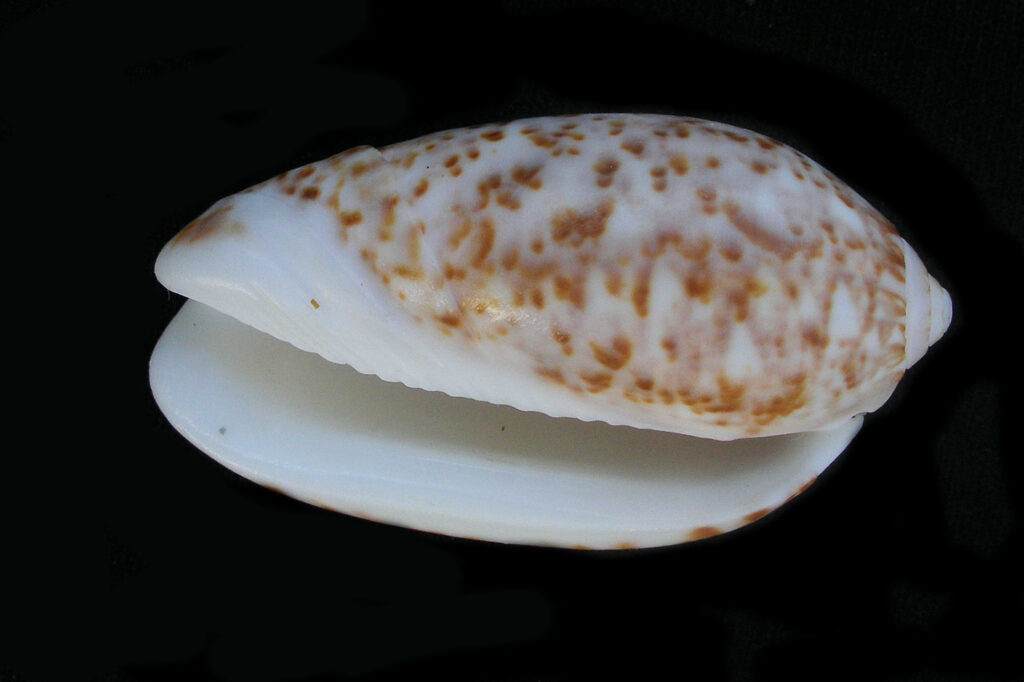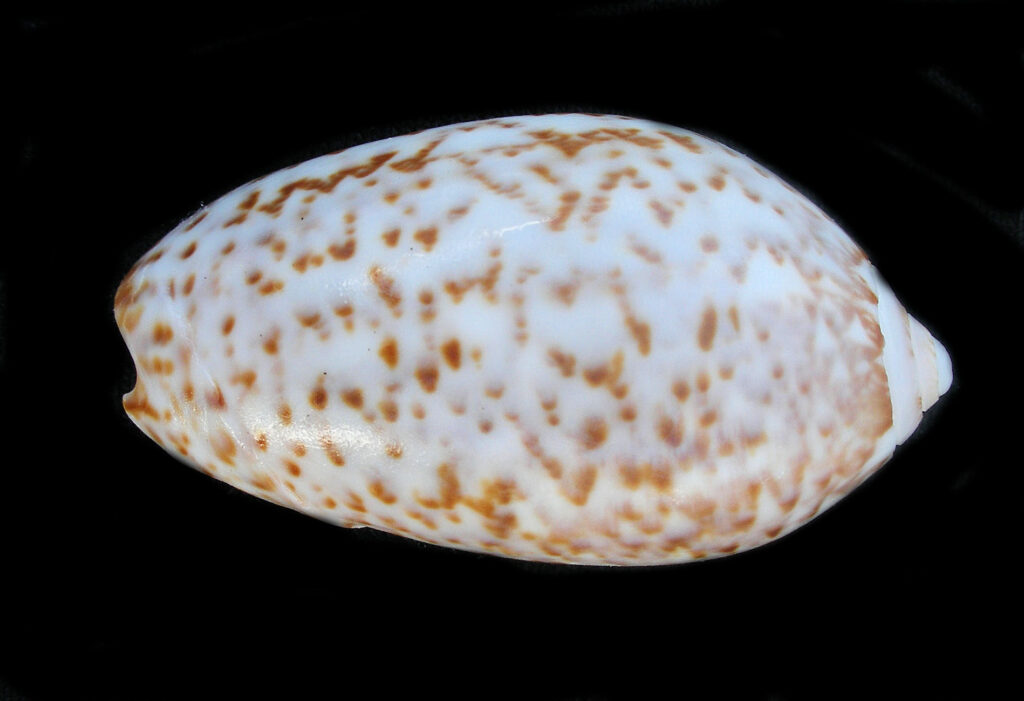Angled Olive Shell, Oliva increassata

 Angled Olive Shell, Oliva incrassata. Shell collected off the beach in the greater Los Cabos area, Baja California Sur, May 218. Size: 5.0 cm (2.0 inches) x 2.5 cm (1.0 inch).
Angled Olive Shell, Oliva incrassata. Shell collected off the beach in the greater Los Cabos area, Baja California Sur, May 218. Size: 5.0 cm (2.0 inches) x 2.5 cm (1.0 inch).
The Angled Olive, Oliva incrassata (Lightfoot, 1786), is a gastropod mollusk that is a member of the Olividae Family of Olives. They are also known as the Giant Olive. They derive their common name from the way the top of the outer lip angles toward the spire. The shells are thick and solid with a somewhat swollen profile with a noticeable ridge where the body whorl meets the spire, an apex that is sharply pointed and an aperture that is wider than present in most other Olives. The anterior of the body whorl is marked by ridges spiraling from the interior. The exterior of the shell can be white, cream, yellowish-gray, or light tan, with dark gray or brown specks, spots or chevrons; the interior is white. Angled Olive Shells reach a maximum of 9.5 cm (3.7 inches) in length and 4.8 cm (1.9 inches) in height.
Angled Olives are found over and within sand or sandy mud substrate from the intertidal zone to depths up to 90 m (300 feet). They range from Magdalena Bay, Baja California Sur to Peru. They are found throughout the Sea of Cortez.
Synonyms include Olive burchorum and Oliva nivea.